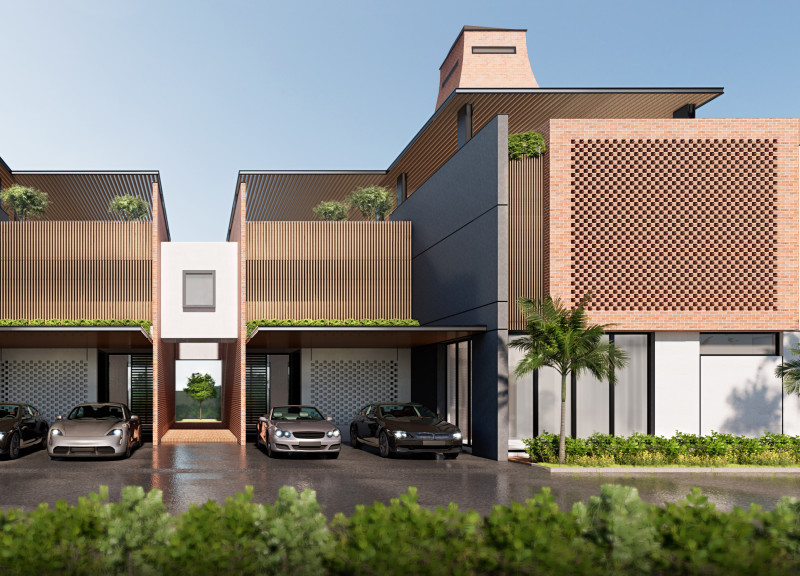5 key facts about this project
At its core, the project embodies a harmonious blend of modern design principles with respect for traditional architectural elements. The building’s layout promotes a sense of openness and accessibility, characterized by large communal spaces that encourage interaction among its users. The central atrium, a pivotal element of the design, acts as a focal point that draws natural light into the heart of the structure, creating a welcoming atmosphere. This thoughtful approach suggests a deliberate effort to minimize reliance on artificial lighting, promoting sustainability and energy efficiency.
The architectural design incorporates a range of materials that not only enhance the aesthetic appeal but also contribute to the building's overall durability and ecological performance. Predominantly, the project features locally sourced timber, which provides warmth and textural depth to the façade. In combination with stone elements, these materials evoke a sense of belonging to the site, rooting the architecture in its environment. The use of glass is also prominent; expansive windows facilitate visual connections to the outside world, blurring the boundaries between the interior and the surrounding landscape. This feature underscores a design philosophy that values natural surroundings and encourages occupants to engage with their environment actively.
Unique design approaches are evident in the project’s strategic orientation. By leveraging the site’s topography, the building maximizes passive solar gain while minimizing exposure to harsh winds. This consideration for the local climate not only enhances the comfort of its occupants but also reduces energy consumption, aligning with contemporary sustainability goals. The roof design integrates green features, such as a living roof that further contributes to the building's insulation and biodiversity, underscoring an eco-centric approach to urban development.
Attention to detail is a hallmark of this project, evident in the bespoke fittings and fixtures that lend character to the interiors. Thoughtful planning of circulation paths ensures that the spaces flow intuitively, facilitating the movement of users and enhancing their experience within the environment. The incorporation of communal areas is a direct response to the needs of the community, reflecting a core understanding of how architecture can serve to bring people together.
The project does not shy away from innovation; its integration of smart technology allows for adaptive management of resources, optimizing heating, cooling, and lighting systems. This technological aspect not only augments efficiency but also represents a forward-thinking approach to contemporary architectural design.
In essence, this architectural project stands as a testament to the power of design in fostering community, sustainability, and a respectful dialogue with its context. Its unique characteristics offer lessons in how well-considered design can enhance both the user experience and environmental stewardship. For those intrigued by the intricacies of this project, a deeper exploration of architectural plans, architectural sections, and architectural designs will reveal more insights into the thoughtful ideas and functional details that define this work. Readers are encouraged to delve into these materials to fully appreciate the comprehensive design strategies employed throughout this exemplary project.


























